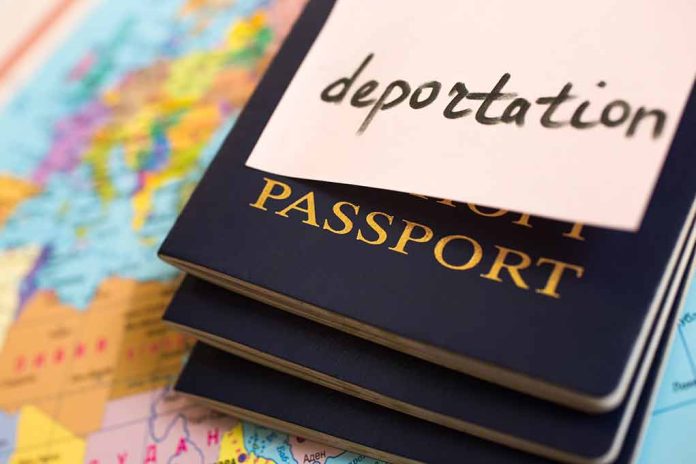
President Trump unveils a dual-track approach to immigration, offering a 60-day voluntary exit window for undocumented immigrants while simultaneously planning support mechanisms for those who choose to leave and potentially return legally.
Top Takeaways
- The Trump administration is implementing a 60-day window for undocumented immigrants to voluntarily leave the U.S. or face potential criminal penalties including jail time and fines.
- Immigrants who depart voluntarily may have the opportunity to return legally, especially farm and hospitality workers endorsed by employers.
- Over 5,000 individuals have already self-deported in recent weeks according to the administration.
- A new registry system will require undocumented immigrants 14 and older to register with the federal government or face consequences.
- The administration is developing resources to support deported individuals in their home countries.
New Immigration Enforcement Approach
The Trump administration has introduced a significant shift in immigration policy, centered around encouraging self-deportation while providing pathways for legal return. During a recent White House Cabinet meeting, President Trump outlined a 60-day timeframe for undocumented immigrants to voluntarily leave the United States. The approach combines enforcement with incentives, as those who refuse to depart would become ineligible for future legal entry, while those who comply may have opportunities to return through proper channels.
Homeland Security Secretary Kristi Noem has described the initiative as “a very big self-deport operation.” The administration is promoting self-deportation through the CBP Home app, with officials reporting that thousands have already chosen to leave. The policy particularly targets undocumented immigrants aged 14 or older who have been in the country for more than 30 days without registering with federal authorities.
Illegal aliens should use the CBP Home app to self-deport and LEAVE the country now. If they don’t, they will face the consequences. pic.twitter.com/5XmNgGyEk2
— Homeland Security (@DHSgov) April 10, 2025
Registration Requirements and Consequences
A key component of the new approach involves reviving a World War II-era registry law, requiring undocumented immigrants to formally register with the government. Those who fail to register could face criminal prosecution. Parents or legal guardians must register on behalf of teenagers subject to these requirements. Registrants will receive official documentation that they must carry at all times.
“President Trump and Secretary Noem have a clear message for those in our country illegally: leave now. If you leave now, you may have the opportunity to return and enjoy our freedom and live the American dream,” said Homeland Security spokeswoman Tricia McLaughlin.
The registration policy does not apply to several categories of immigrants, including legal permanent residents, those under parole, visa holders (even if their visas have expired), individuals with government work permits, or those currently in immigration court proceedings. Officials have emphasized that registered individuals must keep their documentation with them at all times.
Potential Pathways for Essential Workers
While focusing on enforcement, President Trump has acknowledged the vital role undocumented workers play in certain industries, particularly agriculture and hospitality. He has suggested creating pathways for these workers to leave and return legally if vouched for by their employers. This recognition comes as these sectors have long relied on immigrant labor, with the pandemic highlighting their essential contributions.
The administration has indicated plans to improve existing temporary worker programs like H-2A and H-2B, which employers have often found cumbersome to navigate. Trump specifically mentioned that farmers would be able to provide endorsement letters for reliable workers, potentially facilitating their legal return. This approach aims to balance enforcement priorities with economic considerations.
Support for Returning Migrants
Beyond enforcement measures, the administration is developing resources to support those who self-deport. Secretary Noem has emphasized that providing assistance to returning migrants is an important aspect of the policy. These support systems reportedly include food and housing assistance in their countries of origin, designed to ease the transition and encourage compliance with the voluntary departure directive.
The dual-track approach of enforcement and support reflects the administration’s effort to address concerns from business sectors reliant on immigrant labor while pursuing its broader immigration agenda. Industry groups like the American Business Immigration Coalition continue to advocate for immigrant work permits as the administration begins negotiations on a comprehensive immigration plan.






















